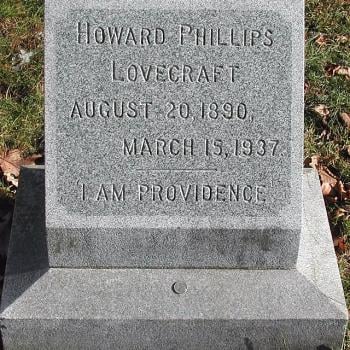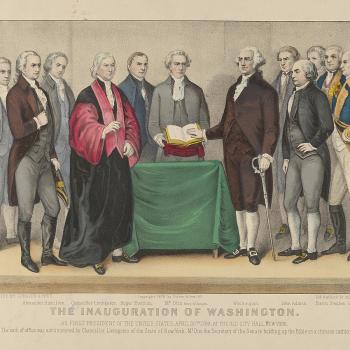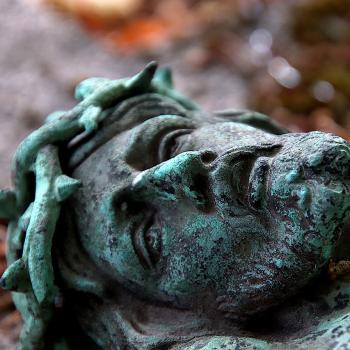But there is more to it than even that. As Julien Green notes in his biography, "The renunciation in the presence of the crowd was in itself, according to medieval mentality, a juridical act. From now on, Francis, with nothing to his name, was taking sides with the outcast and the disinherited."
After his conversion, St. Francis of Assisi conformed his life to the example of Jesus and, as Lawrence S. Cunningham notes, offered his life "as a gift to others."
In the spring of 1208, during a Mass in Assisi, Francesco hears the Gospel story in which Jesus asks his followers to "take nothing with them for the journey." Taking this as a personal call, he throws away his shoes, tunic, and staff, and put on instead the simple garb of a shepherd -- what would become the familiar Franciscan tunic and hood -- tied with a cord around his waist. The poor man and his preaching are so compelling that he begins attracting adherents immediately. By the following year there are already twelve followers, who become known as the fratres minores (Latin for "lesser brothers"), better known as the Franciscans.
In 1210, Francesco presents a formal petition to found a religious order to Pope Innocent III in 1210. Some of the papal advisers scoff at Francesco's simple plans for his "rule," finding its emphasis on radical poverty overly idealistic and almost willfully impractical. But so impressed is the pope with the man who stands before him that approval is granted swiftly.
Francis returns to Assisi to reside with his brothers in a small rural chapel in the countryside. From there, they fan out through central Italy, preaching, begging for alms, and performing simple manual labor. In 1212, a women's division of the order is founded under the leadership of his close friend Clare, a young woman of Assisi. Francesco himself cuts off her hair, marking her for a life of poverty. The group became known as the "Poor Ladies of San Damiano," called today the Poor Clares.
In 1219, during the middle of the Crusades, Francis journeyed to Egypt and was received by the Sultan Mulik al-Kamil, detailed to great effect in Paul Moses’s new book The Saint and the Sultan. It is an expression of his desire for nonviolence, peacemaking, and reconciliation in the midst of an era in which "sacred violence" was embraced even by religious leaders. Francis places himself in a dangerous place and employs his body as an instrument for peace. His hopes to convert the Sultan are unrealized, but al-Kamil listens to Francesco with good will. At the end of their lengthy discussion he is supposed to have said, "I would convert to your religion, which is a beautiful one, but I cannot: Both of us would be massacred."
After his return to Italy, the number of friars grew, as did tensions among the new Franciscans, who had competing ideas about what it meant to lead a religious life. Seeing he was not up to the challenges of running a rapidly growing religious order, Francis resigned, turning over the management of his group to another brother.
With his health failing (he suffered from a particularly virulent eye infection as well as tuberculosis during much of his later years) he spends increasing lengths of time in prayer. During one retreat, at Mount La Verna, Francesco has a deep mystical experience in prayer and feels an intense identification with the sufferings of Christ. During this retreat, he becomes the first person to receive the "stigmata," as the wounds of Christ's Passion are imprinted in his hands, feet, and sides. Greatly embarrassed by this, he conceals them for the rest of his life by covering his hands with his habit and wearing shoes and stockings on his feet. Much of his time was now spent in prayer.
Francesco's last few years were filled of pain and discomfort, from both his eyes and the stigmata. Still, he composes during this time his joyful "Canticle of Brother Sun" during a final visit to San Damiano. It is a final expression of his lifelong love of creation and his innate sense of the sacramentality, or holiness of all things, animate or inanimate.
At his death, Francesco asks to be laid on the bare earth near a favorite chapel in the woods and to be dressed in an old grey habit. On October 4, he welcomes "Brother Death." Though he requests burial in the Criminals' Cemetery the next day his brothers, who loved him so much, went against his wishes and took his body in solemn procession to the church in Assisi. There it remained until two years after his canonization in 1230, when it was removed to the basilica that still holds his body.




